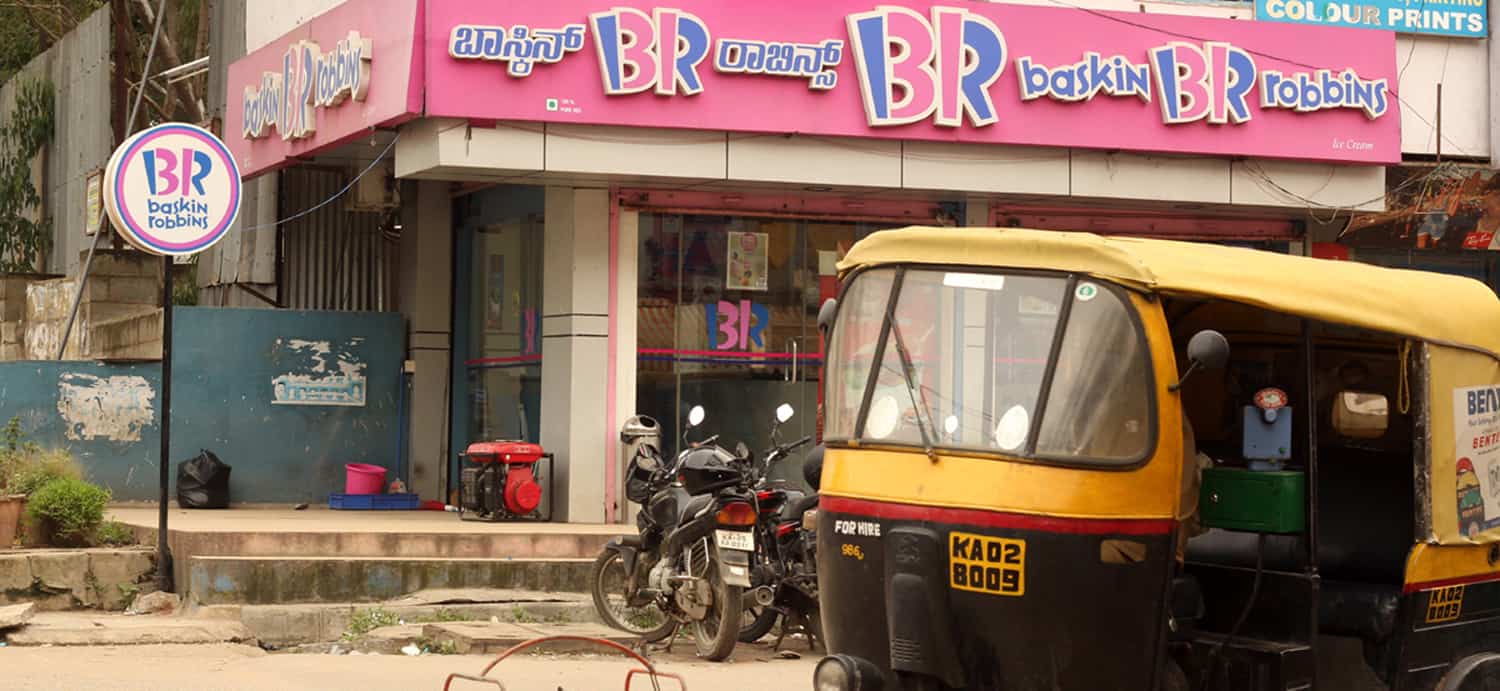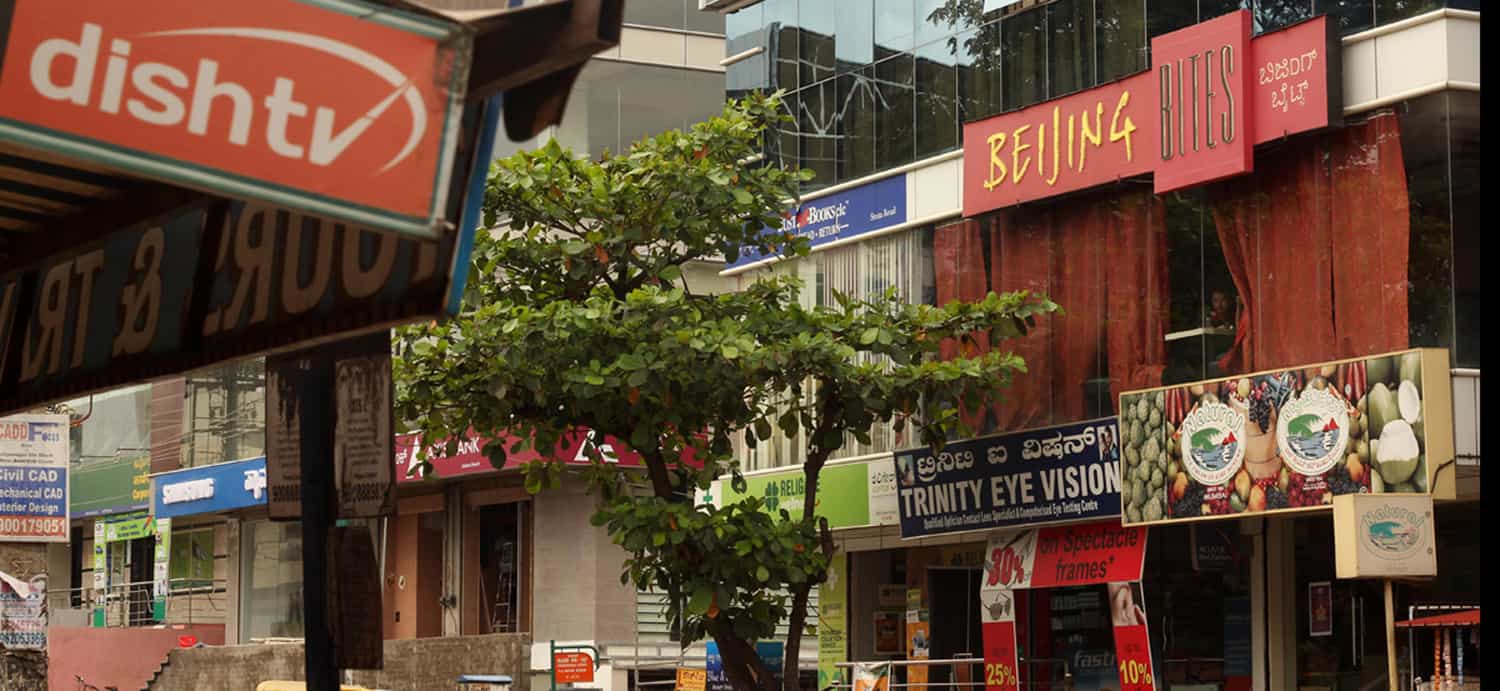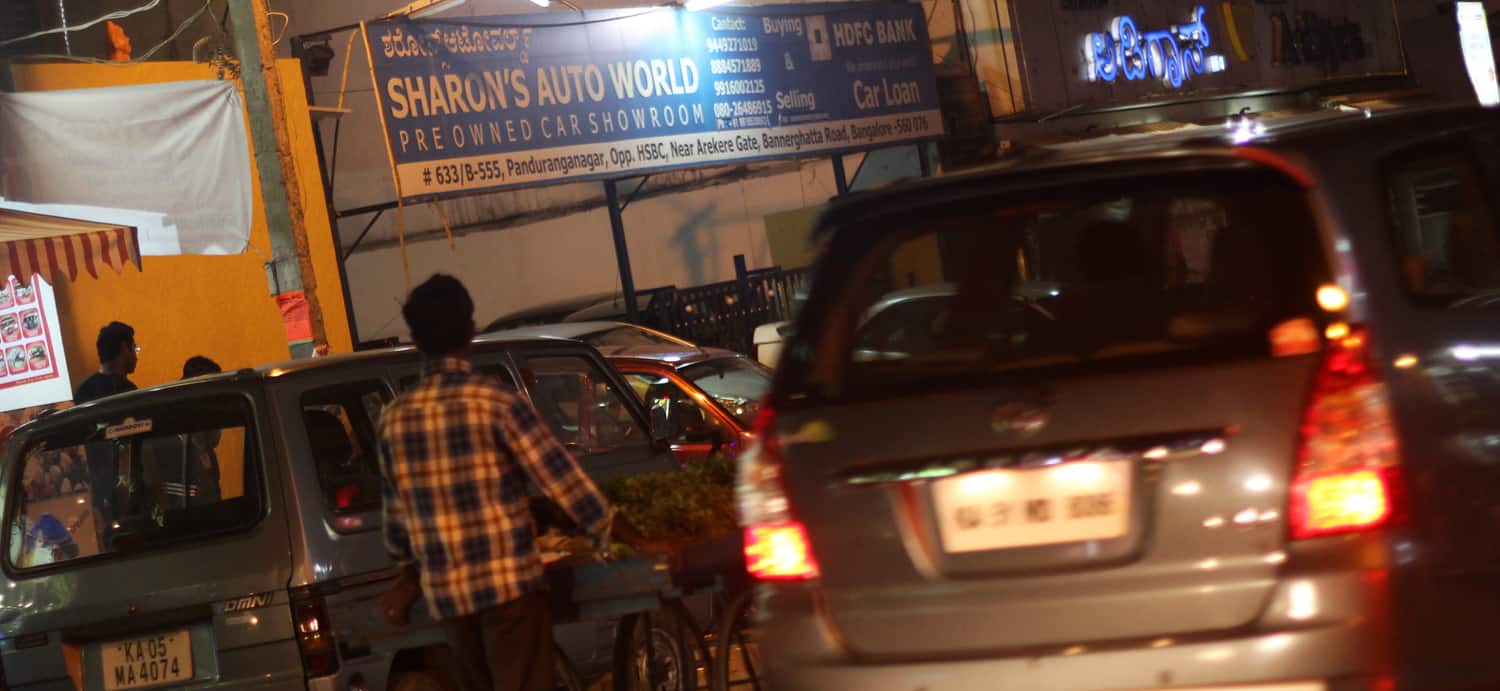It is really the small changes, the ones that you see everyday, but don’t quite remember seeing, that seem to change a Street. As one street changes from being a quiet street to being a busy street, somewhere else another street begins its transformation. Every changing street changes its neighbourhood, and every changing neighbourhood changes the city. The small changes are seen everywhere, in almost every city in India. In Bangalore, it’s the Adiga’s lane off Bannerghatta road, in Mumbai, it’s the Hill road in Bandra – streets that are “not the same anymore”.

Here, in Bangalore, we have been closely watching the changes that have been taking place in the ‘Adigas lane’ – that’s the lane off Bannerghatta road, close to the Arakere signal junction. Most of us here call it by this name because of the fast food restaurant ‘Adiga’s’. It occupies a place at the street corner. Beyond that and away from the main road were independent houses. It was a quiet lane when we first moved here five years ago. Then, gradually, a Baskin Robbins came up, the vada-pav chain – Goli Pav, the Juhu Bombay Naturals Ice cream parlour, the Lakme Salon moved here. Further down, a gym opened up and the library chain Just Books and then the Cuppa coffee shop. All of this in the last five years. This lane was changing so rapidly. I wanted to understand how we perceive these changes and whether changes in a city can be read from the small changes taking place all around us.

In his book, ‘How Cities are Saved’, Herbert Lottman points out that there is no single standard by which we say that city life is good for us. For some people, a crowded street or city centre represents an irresistible attraction, for others it is a place to avoid. Today, for some people, the Adiga’s lane is where ‘leisure’ is. For others, it’s where ‘home’ is. An outing at the Adiga’s lane for a vada-pav, a coffee or an icecream is not uncommon for many who live or work on Bannerghatta road. So, this lane is an attraction for some who live in the nearby areas, it’s a thoroughfare for others who pass it by regularly but do not shop here and for the people who live on the street itself the increase in both pedestrian and vehicular traffic is a new factor to cope with.

I began to ask people who live in and around this area how often they come here, what brings them here and why they think the street is changing so rapidly. One of the residents in the neighbourhood, who lives in L&T South city said that she drives through this road maybe 2-3 times a week and stops here only some times. She says: “I go there to pick breakfast from Adigas, buy Pav from Goli Vada Pav, courier and xerox in a shop next to the Juice place, then there is hardware shop next to Adigas where I have picked some plumbing and toilet related items from there, Lakme for haircut for me or kids, and visit JustBooks now and then. These visits happen say once in 4-6 months.” According to her, from 2005 to 2009, the lane had only Adiga’s. But slowly in the last 3-4 years, things have changed and the possible reasons could be the increasing customer base because of HSBC, RelianceMart, Mantri Paradise, Panduranga Nagar layout and even L&T South city; an improved Bannerghatta road which gives an easy access to this road and perhaps the fact that it is a nice, tree-lined road.

For a resident of the Mantri Elite apartment complex on Bannerghatta road, this is a lane they frequent once or twice a month whilst visiting friends in L&T South city. As to shopping here, it’s usually Natural Icecream or Goli pav that they frequent and Beijing Bites for home delivery. She says: “It’s fast becoming the food lane for the area. There is nothing like that south of Arekere for sure. Plenty of street parking to help the situation. Offices in the vicinity are always looking for variety for lunch. And it’s a good hangout place what with the combination of shops – full meals, snacks, icecreams, coffee shop...”

Someone who lives in Mantri Paradise on Bannerghatta road said she goes to the Adigas lane at least once a week and it’s usually to pick up something from the hardware shop, Goli vada pav, Natural icecream, Just Books, Trinity eye care, Adigas restaurant or just for a stroll. According to her, “The popularity of the lane comes from the width of road, the fact that it is a good alternative route from MICO layout with the Just Books library and the Natural Ice cream parlour adding charm to the whole experience”

Yet another resident from here, who lives in Adarsh Rhythm apartment said she visits the Adiga’s lane 2-4 times in a day. She usually walks her dog there or drives through to or from Bannerghatta road, stopping sometimes at Adiga’s or at the Photocopy shop about once a week. As to why the street is changing, she adds that: “The population in the area is growing rapidly, so there is a growing change in the variety in income brackets and the spending pattern. Mainly the expansion in the ‘Adiga’s lane’ is to cater to that demand and largely in the food/hotel sector!”

The ‘Natural Icecream’ chain from Mumbai that set up a franchise here three years ago looked for a commercial space abutting a Main road, a street where visibility was good and which already had a substantial number of footfalls. Another company that also moved to the Adiga’s lane three years ago says that they set up their business here because this lane was wider than other lanes in the neighbourhood and parking would be easier for their customers. It has worked very well for them. They do realise that for the residents in the lane, the increasing commercialisation of the street may not be a welcome change. They point out that traditional neighbourhoods such as Malleswaram are changing rapidly too. For instance, the Mantri mall in Malleswaram is an attraction for many in the city but has changed the everyday life of the neighbourhood rather drastically.

Some days ago, a friend who has grown up in Bombay but now lives in Bangalore talked of her excitement at seeing the new “high-end” coffee shop come up opposite her parents’ house at Hill road in Bombay. “You know, the kind where you get a pastry for Rs.150!” she said. She was so surprised to find how this once simple Hill road lane where Goan families have lived had changed with coffee shops and restaurants coming up in locations where there had once been simple businesses; where brand showrooms had been willing to pay exhorbitant real estate prices for a space in a building which she so clearly remembers from her childhood to be just an ordinary building.
These changes in old neighbourhoods in many of our cities are becoming more and more frequent.There are the old neighbourhoods that are changing rapidly from what we know and remember and the new neighbourhoods that are leaping forward to what we don’t yet know. How each of us perceives these changes seems to depend on when we have ourselves entered the life of the street and the neighbourhood. What I see as “change” in the Adiga’s lane depends on when I first knew it. If that was five years ago, I compare what I see now to the lane five years ago. For someone who has lived here for twenty years, the perception of change is a different story. Are our streets then also repositories of memories of different generations, each with a different meaning?
Does it have anything to do with the cost of real estate?